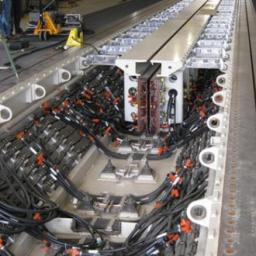US Navy testing electromagnetic catapult on aircraft carrier
 For almost as long as aircraft carriers have existed, they've been equipped with steam-powered catapults to help fighters and bombers get airborne. That's a remarkably old-fashioned technology when you're launching stealth fighters that cost upwards of $20 million each. Aircraft carriers are gigantic, but the runways simply aren't long enough for most planes to generate sufficient lift under their own power.
For almost as long as aircraft carriers have existed, they've been equipped with steam-powered catapults to help fighters and bombers get airborne. That's a remarkably old-fashioned technology when you're launching stealth fighters that cost upwards of $20 million each. Aircraft carriers are gigantic, but the runways simply aren't long enough for most planes to generate sufficient lift under their own power.The US Navy is now testing a replacement system called the Electromagnetic Aircraft Launch System (EMALS) aboard the new USS Gerald R. Ford. It works by using an electric current to generate magnetic fields that propel a carriage down the track built into the runway, launching planes much more smoothly and efficiently than the old steam catapults with improved reliability. A steam catapult takes up a great deal of space and weigh in excess of 1,300 pounds. These systems take a long time to recharge after each launch, and the launch itself is rather abrupt. There's no smooth acceleration with a steam piston, resulting in increase wear on the body of the aircraft. Steam catapults also use more power than the EMALS system.
"Fire" heats water makes stream that turns a turbine to make electric power.
Replace word "fire" with: Coal, Oil, Gas, Nuclear, Solar Furnace, Geo-Thermal, so 19th century!
So superheated stream driving the plunger is less efferent the electric-o-magnetic.
One conversion of energy, vs two? No loss there!